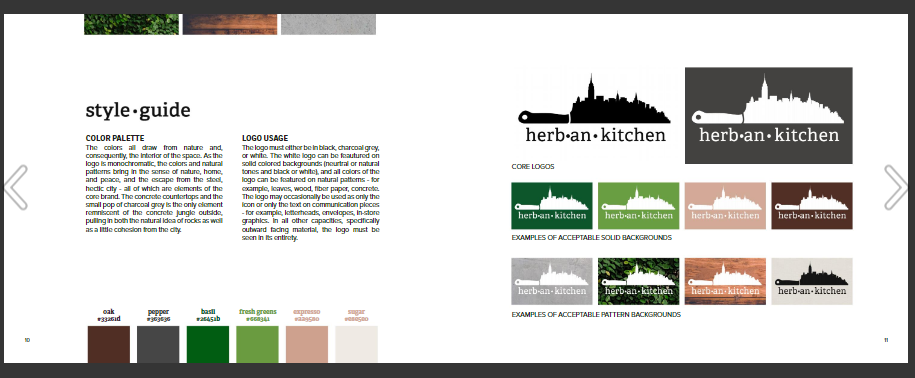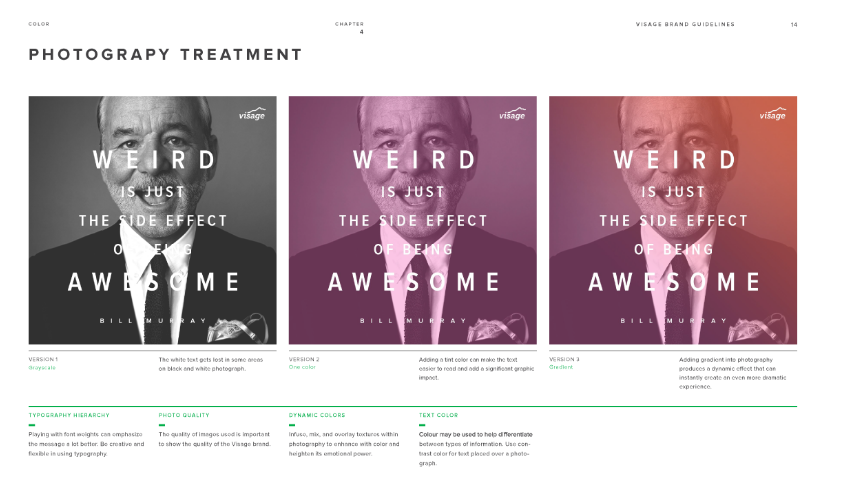What your company puts forth for the world to see is important. Everything your business does needs to be on brand: your website, social media profiles, your blog, advertisements, print materials like business cards and packaging, and the list goes on. Your brand is who you are and it needs to be consistent across all channels. In fact, according to Lucidpress, brands that are consistently presented are 3 to 4 times more likely to experience brand visibility.
To keep your brand and your messaging consistent your company needs a style guide. A style guide should keep all of your team members on the same page and help them learn how to create and design with your brand in mind. But sometimes your employees still miss the mark and are seemingly not paying attention to the rules you’ve set forth. What could you be missing?
Get your branding back on track, check out these 4 tips for developing a company style guide that sticks.
1. Outline the 7 elements.
To develop a company style guide that sticks, you first have to identify and outline the 7 elements that are important for your employees to keep in mind. When creating a style guide, you’re not just focusing on your logo, there are a number of elements you need to consider in order to create a complete brand identity. The 7 elements are:
- Brand Story – Your company mission, values; Why do you do what you do and where do you want your company to go?
- Target Audience – Who are your ideal customers? What are their needs, pain points, interests, etc.?
- Voice – What’s your company personality? Are you serious or playful? What words do you want to use to highlight your brand and what words do you want to avoid?
- Logo – You may have already designed a logo but you also have to consider how you’ll use your logo in different settings and how you don’t want to use your logo.
- Imagery – What types of images are on-brand? How will you edit them and lay them out?
- Color Palette – What are your company colors? Not just the company logo color but accent colors as well.
- Typography – What font(s) will your company use?
Laying out ground rules for each of these elements will help you easily pull together a full style guide that covers everything your employees will need to know.
2. Make it visually appealing and easy-to-follow.
A 40-page style guide that’s just a wall of text isn’t appealing to your employees and will make it difficult for them to follow as well. So, make sure your company style guide looks stunning and is easy-to-follow. If you’ve never created a company style guide before, browse the internet for style guides from other companies for inspiration.

If your design skills aren’t up-to-par and you don’t want to hire a designer, you can use a tool like Frontify. With Frontify you can easily create a beautiful web-based style guide in minutes. You can add your own images with the click of a button, add your company colors to automatically generate a color swatch, and use over 30 smart blocks to create a fully customized style guide, without having to know a thing about code.
3. Provide visual examples.
When creating a company style guide that’s easy for your employees to follow, you’ll want to not only tell them what to do, but show them. Providing visual examples is a great way to drive home the do’s and don’ts of your brand image. Like in the example below, show your employees how your branded images are supposed to look, you could even include screenshots of what not to do as well.

You can also visually show the do’s and don’ts in text. For instance, if you want your employees to use contractions as much as possible, spell it out for them in your style guide…literally, like this:
Don’t:
We are excited to introduce our new product.
Do:
We’re excited to introduce our new product.
When you provide visual examples in your style guide, your employees will be able to quickly determine what they should and shouldn’t be doing, making it easier for them to catch their mistakes and stick to the rules.
4. Make it easy to access.
Your employees will never follow your style guide correctly if they don’t have easy access to it. So, in order to make sure your employees consult your style guide before creating anything, make sure it’s easy for your team to find. If you’ve made hard copies of your style guide, make sure to create a digital copy to be shared with every employee as well since some people will prefer it in a digital format.
You should also store it in your company server or Wiki. You could even create checklists for your employees to reference before they submit their projects that includes a step to check the company style guide with a link to the document.
Over to you.
You could have the most talented team members in the world who create amazing content for your business, but if everyone’s on a different page, your brand will become a jumbled mess. But now that you’ve got these new tips, your style guide won’t be ignored, it’ll be center stage, and your brand will be clear and consistent for your audience.